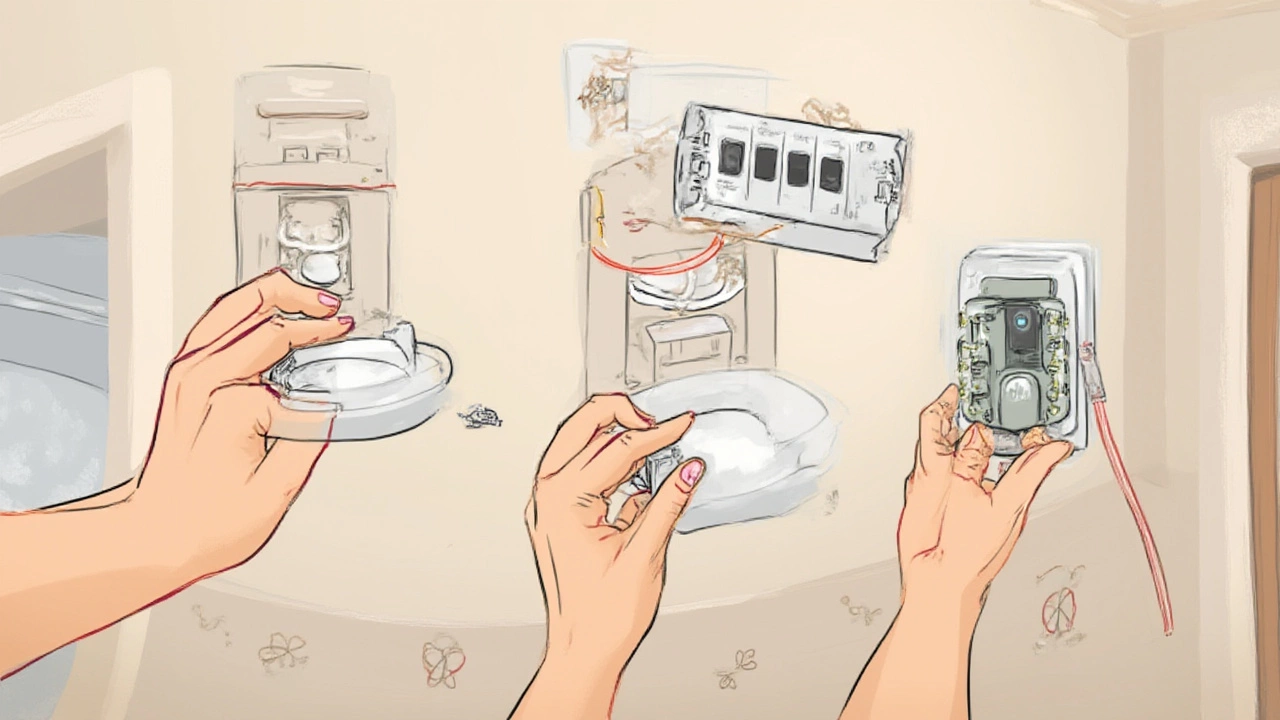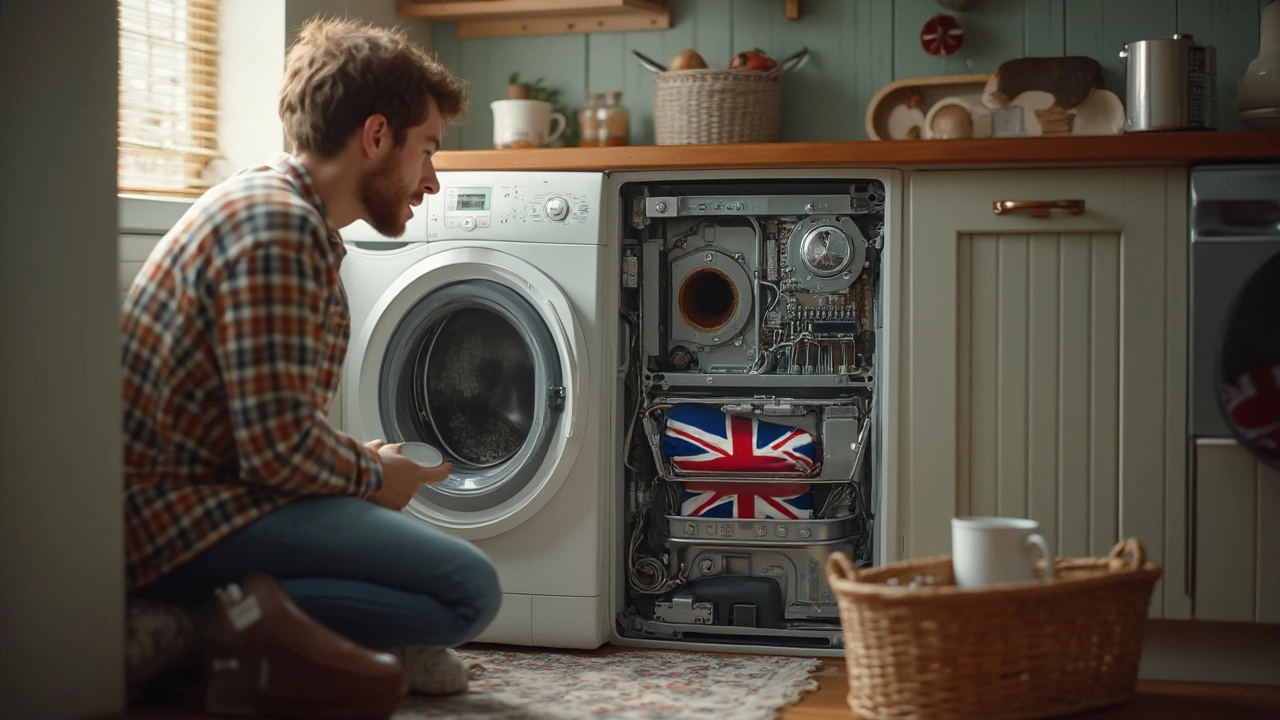Ever had an extractor fan stop spinning right when you need it to clear out a smoky kitchen, or keep your bathroom fresh? Suddenly, the room feels stuffy, moisture lingers, mold threatens, and you’re left poking a plastic grille wondering, “Should I call an electrician for this, or is it a job for someone else?” It’s a surprisingly common question—one I get from friends, neighbors, pretty much anyone who’s fought with foggy mirrors and stale air.
What Exactly Do Electricians Do With Extractor Fans?
Alright, let’s clear up the confusion up front. Yes, electricians do fix extractor fans. In fact, when your kitchen or bathroom fan gives up, the first pro you want to call should be a certified electrician. Why? Because these fans are hardwired into your home’s electrical system. Messing around with wiring when you’re not trained is a quick ticket to getting zapped, blowing a fuse, or—worst-case scenario—starting a fire.
Extractor fans, especially the kind found in homes across the UK and most modern US houses, are linked to the main circuit. Sometimes there’s even a separate switch or a humidity sensor driving them. Electricians have to figure out if the problem is in the wiring, the fan motor, or the controller. If you have a fan that turns on with the light (a setup that’s bizarrely common in flats and new build houses), electricians get called in even more: you need to know which cable is safe, and which is waiting to bite.
What sort of things do electricians do? They’ll diagnose issues—maybe your fan’s buzzing, rattling, or just completely dead. Is the motor bust? Is there a bad connection? Has the switch failed? Sometimes there’s an issue with the isolator switch—a little wall switch often set above the bathroom door. Or water’s gotten into the electrics, which is more common in older homes with leaky ductwork. Some electricians say fans are among the most fiddly small appliances they deal with, partly because people try to fix them without first cutting the power. If you’re wondering if a handy-person or ‘ventilation specialist’ should be your go-to—nope, not for the repair part. Only an electrician is actually licensed to touch the electrics in the UK and many US states.
Of course, not all extractor fans are wired the same. Some super basic models, especially those sold as DIY plug-and-play kits in garden centers, can simply be unplugged. But the majority are built-in. For those, electricians are your best friend.
Here’s an interesting fact: According to a 2023 UK Home Habits survey, extractor fan faults are the third most common electrical callout for small appliance repairs, right after faulty sockets and broken light fixtures. That’s more than boilers, more than smart doorbells. Don’t feel embarrassed if yours conks out—it happens a lot.
Electricians don’t just handle repairs and replacements. They’re also the ones who install these fans in the first place. They assess where the vent exits (to avoid weird drafts or external noise), link the fan to the appropriate circuit, and check that it meets local moisture and fire safety rules. Some older fans don’t comply with current building regs—another reason to have a pro look things over when swapping out old kit.
| Type of Extractor Fan | Typical Repair Needed | Who Can Legally Fix? | Avg. Cost (UK, 2025) |
|---|---|---|---|
| Hardwired Bathroom/Kitchen Fan | Switch, wiring, motor, timer faults | Electrician | £60-£150 |
| Window/Wall Plug-in Fan | Cleaning, filter, simple replacement | Homeowner or Handyman | £30-£70 |
| Commercial Ventilation Systems | Fan/motor, electronics, balance | Specialist Electrician | £150-£350+ |

Common Extractor Fan Faults And How Pros Fix Them
Let’s get practical. Why do extractor fans stop working? Usually, it’s one of a handful of things—and most boil down to electrics. The fan might be full of dust, sure, but a simple blockage usually just makes it noisy. Real ‘dead fan’ problems tend to mean:
- The switch isn’t sending power
- Loose or burned wiring at the junction box
- Broken isolator switch
- Fan’s internal fuse has blown (rare, but possible)
- Motor seized up after years of humidity and grime
- Timer module or humidity sensor failed
If you try flicking the wall switch and nothing happens—no hum, no airflow—cut the power at the breaker box before doing anything else. Electricians usually start there, too. They’ll use a voltage tester to check for current. If there’s still current at the fan but it won’t spin, it’s often a dud motor or bad capacitor. Some motors can be replaced or even re-oiled (in pricier brands). In others, you’re looking at a whole fan swap.
Clean fans are happy fans. Electricians always recommend cleaning grilles and blades at least twice a year—otherwise dust and hair can jam the works. But if you want to pry off the cover to clean it and see corroded terminals or melted plastic, stop. That’s not just gross—it’s dangerous. Water leaks, old wiring insulation, and dodgy DIY splices are textbook reasons for repeated extractor failures, and only a licensed sparkie should poke around deeper once things start melting or shorting.
Humidity sensors and timers complicate things. If your fan runs way too long, or never switches on, the electronics might have failed. Sometimes you’ll see modern fans with touchscreen or app controls—yep, you guessed it, electricians are now the accidental IT support for these gadgets too.
Wires inside extractor fan housings are often very tightly packed, so it’s easy for even experienced DIY folks to trip a breaker by shorting something mid-clean. Electricians use special insulated screwdrivers and voltage pens to probe safely. Fun fact: UK stats from the NICEIC (the national electrical safety body) show that 47% of extractor fan callouts in 2024 were due to failed wiring or heat damage at the fan’s back plate under the cover, not the fan motor itself. In these cases, simple motor swaps won’t fix the issue. It usually means rewiring.
When a replacement is needed, most pros recommend fans with ‘backdraft shutters’ built-in, so you don’t get cold air leaking back through the old hole. But be picky with budget fans—cheaper ones sometimes last only a couple of years before the bearings squeal. Your electrician may steer you towards models with a warranty (and offer you one on their own work, too).
Handy tip: If your extractor fan starts making a new rattle or buzzing, switch it off and call a pro. Many motor failures start with a high-pitched whine or groan, especially in cheap units. Leaving a dying fan running risks not only complete failure but also electrical faults.
Some folks also ask, “Can an electrician make my existing fan quieter?” Short answer: Sometimes. If the fan is mounted on a flimsy plasterboard wall, vibration might be the problem. Pros can fit flexible ducts or anti-vibration grommets under the screws. For chronic noise, upgrading to a low-decibel (dB) fan design often fixes things—the best new models run at just 25 dB, barely a whisper.

DIY: When You Should Call An Electrician (And When You Actually Don’t Have To)
Here’s the real talk: There are a few things you can do for your extractor fan before calling in a pro, but not as many as YouTube would have you think. Cleaning dust and hair from the outer grille? Totally fine if you cut the power first. Popping off a washable filter and giving it a soak? No problem. But for anything involving wires—leave it alone. Modern UK regs (Part P, if you want to be technical) say normal folks aren’t allowed to meddle with fixed electrical appliances. Same goes in a lot of US states. If you’re renting, your landlord is responsible for getting a licensed person in.
Some warning signs that mean you definitely need an electrician:
- The fan no longer turns on or off with the switch
- There’s a burning smell or signs of melted plastic
- You see corrosion around wires or inside the housing
- The isolator switch is hot to the touch
- The fan keeps tripping the breaker when it runs
And for those tempted to just “replace the cover” and call it a day: covers trap lots of grime, but usually don’t stop the fan entirely. If you swap it and the fan is still dead, it’s an electrical issue underneath.
Electricians don’t just come in for emergencies. If your fan is original to the house (as in, dates back to the 90s), consider an upgrade. Smarter fans now come with timers, humidity and light sensors, and even Wi-Fi control, and use a fraction of the energy of the old types—some certified versions for bathrooms use less than 8 watts on full blast. This can really lower the risk of damp patches and mold, because fans are more likely to automatically switch themselves on when needed, and quietly switch off after you leave.
What about cost? Repair visits for a jammed or failed home extractor fan usually run £60–£150 in the UK (and equivalent $80–$200 in the US), depending on what’s wrong. That doesn’t include the price of a new fan unit, if you need one, which can range from £30 to £100 for most households. For more complicated jobs—like installing a fan in a new location, or sorting out fire-safety dampers—expect more, but call for a written quote. Most sparkies can swap a like-for-like replacement in under 90 minutes if the wiring is good, so don’t let anyone upsell you days of work unless you need whole new ducting routed through the attic.
One last piece of advice: keep a record of when your fan was installed, or last serviced. If your property has moisture problems, local authorities or landlords will want to see you’ve looked after the ventilation. And if you’re selling, showing off recent electrical safety checks (including that extractor fan!) makes buyers breathe easier, literally and figuratively.
You don’t need to be an electrical genius to get decent air quality in your kitchen or bathroom, but you do need to know when to call in the experts. Electricians are absolutely the go-to for extractor fan repairs, upgrades, and safe installations. So next time you’re stuck with a dead fan and a steamy room, now you know who to call—and what’s probably going to happen when they knock on your door.



